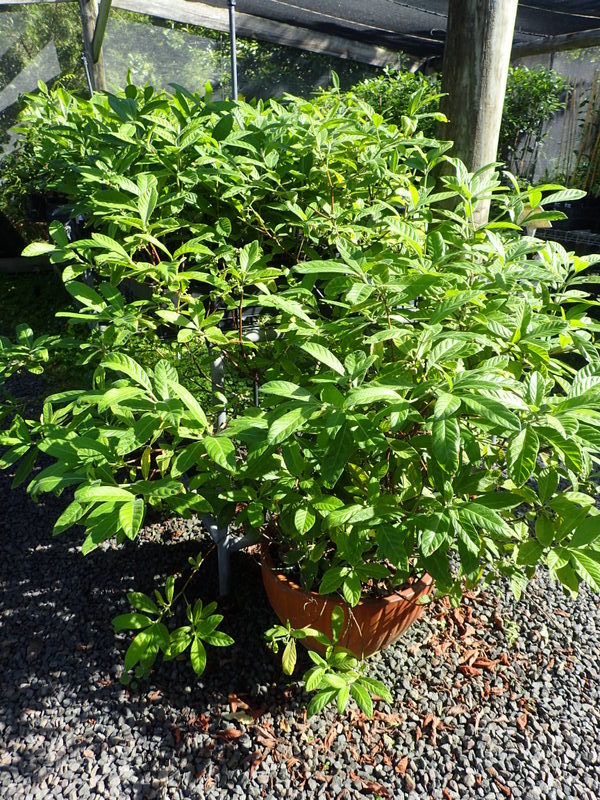Psychotria loniceroides /Hairy Psychotria
Psychotria (si-COT-re-ah) psyche– meaning the soul, treph-to support or nurture (refers to the powerful medicinal properties of some species); loniceroides(lon-iss-er-OIDS-ees) like Lonicera, the honeysuckle. Psychotria loniceroides is an attractive shade loving shrub, 1.5 to 2.5m in height and approx. 1m wide. It has soft downy covered pale green foliage with clusters of white to yellowish small flowers February to April. Hairy psychotria usually produces flowers and fruit once it reaches 1-2 m in height. The creamy yellow berries, while edible, are not particularly tasty but they are known to attract birds from March to August (including the Green Catbird in some areas). Psychotria loniceroides can be found in rainforests and eucalypt forests of the Sunshine Coast. This little beauty is a wonderful long-lived shrub for shady spots in coastal gardens. They also make excellent indoor plants. Information provided by Coolum Community Native Nursery |
Nurturing Noosa’s Eastern Beaches and Nature Reserves


I have planted a psychotria loniceroides in shaded courtyard about a foot from fence, and wondering what fertiliser I can use to help it along. (Should it be native fertiliser)Any other suggestions would be appreciated. I’m planting a wildlife friendly garden
Hi Carolyn,
You need a fertilizer that is low in Phosphorus, as Australian native plants require less of this element than exotic plants or food crops. (That is why runoff from garden and agricultural fertilizers is bad for the bush, as it encourages weed growth rather than growth on native species.) Searles is a Queensland-based company that makes a Native Plant Food that is formulated especially for native plants and is low in Phosphorus. It’s readily available at garden and hardware stores.
Psychotria lonerceroides likes moist but well-drained soil. It will generally not grow as tall in heavy shade and can be slow to get going.
Great that you are putting in a native garden. It takes a bit of time and perseverance but the birds and other creatures will thank you.
Best wishes Jude